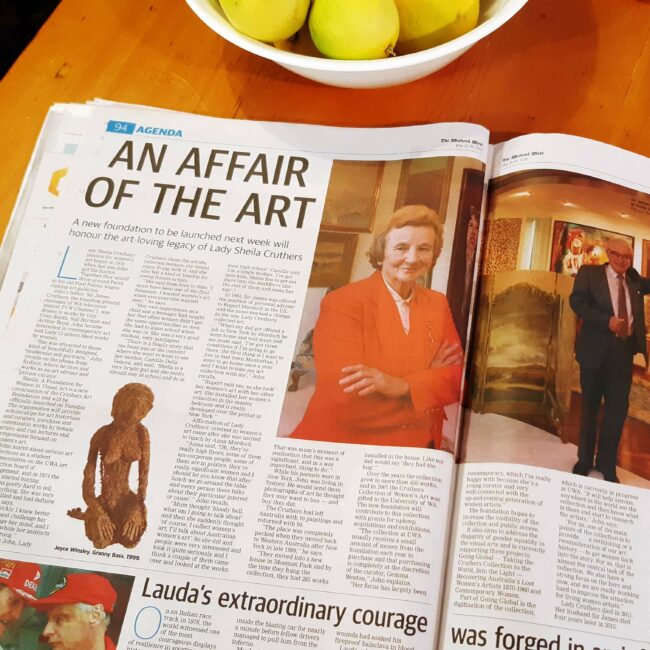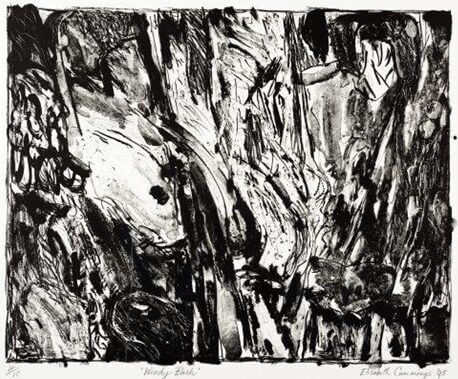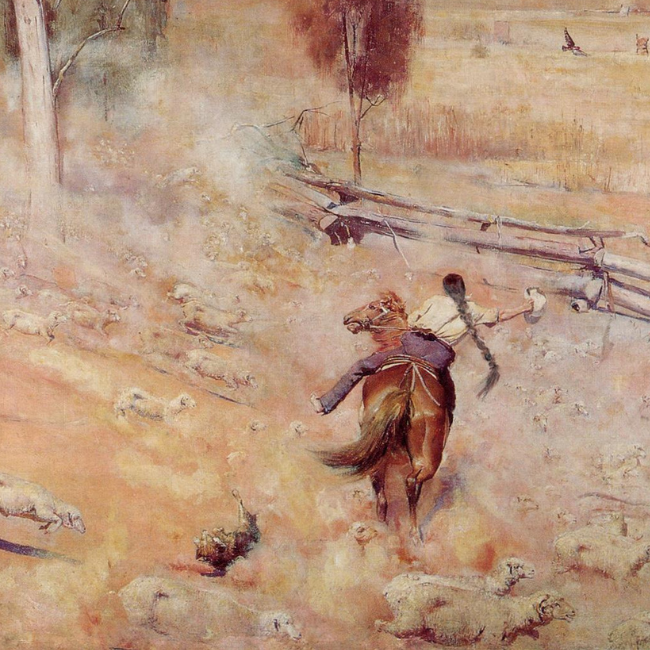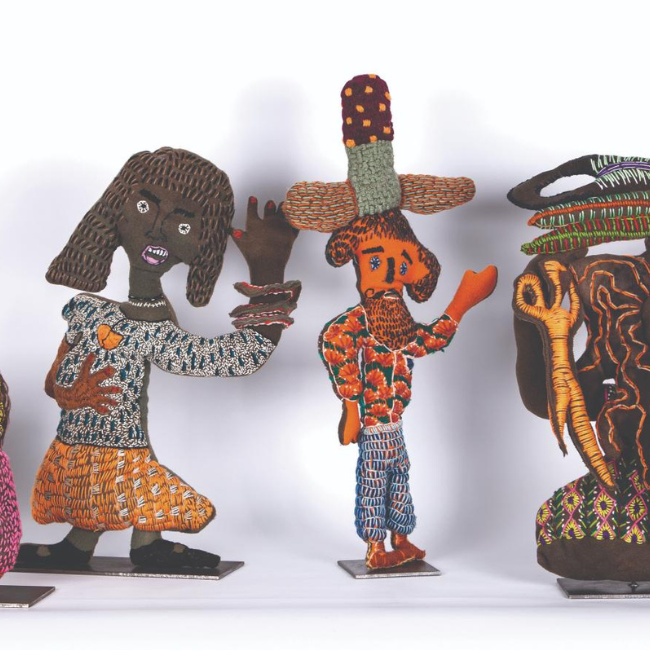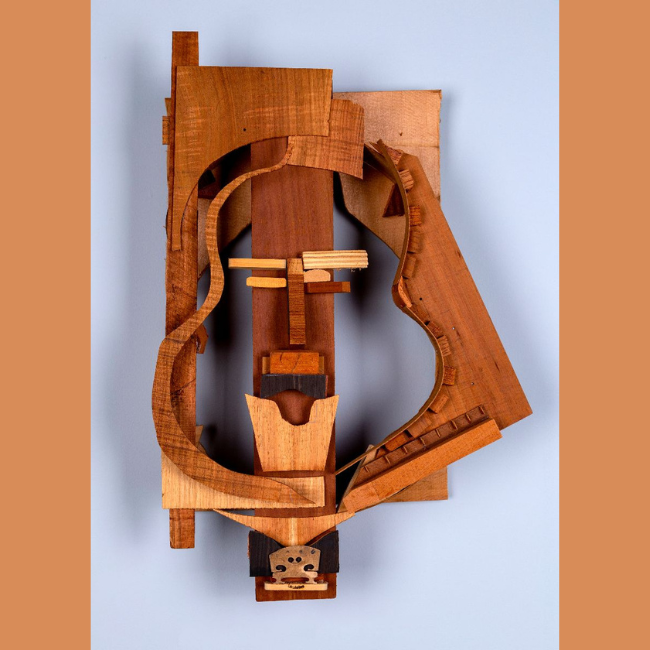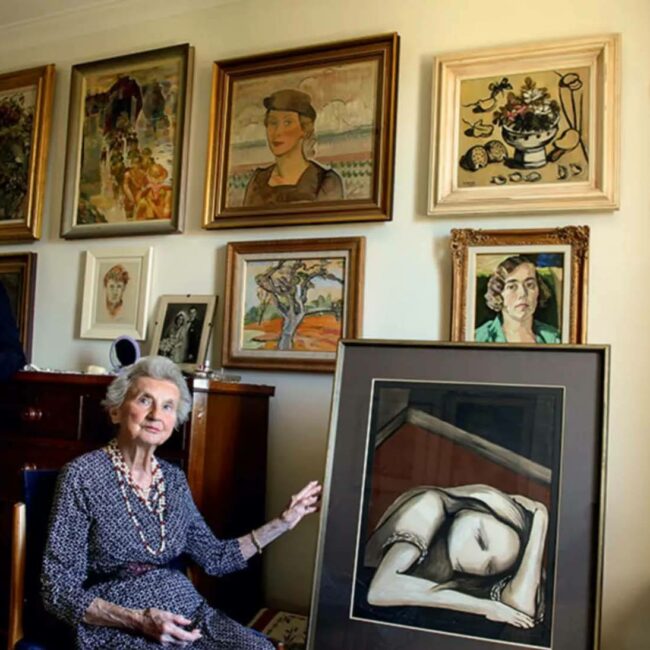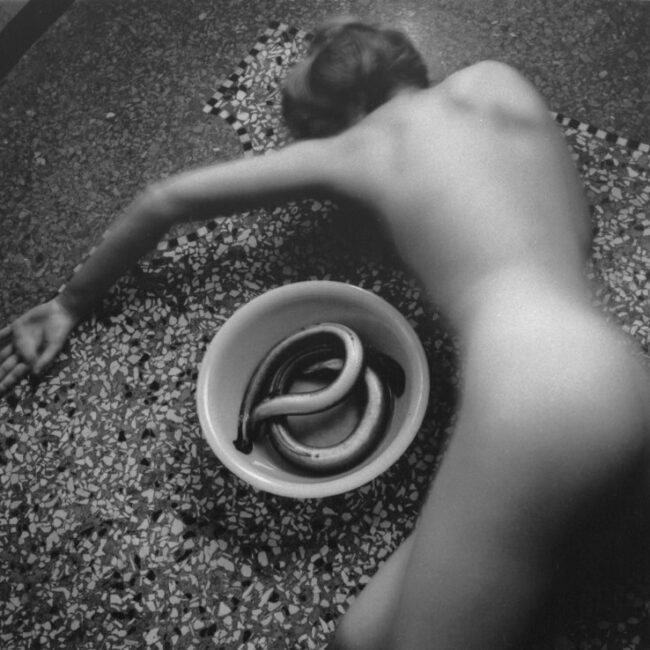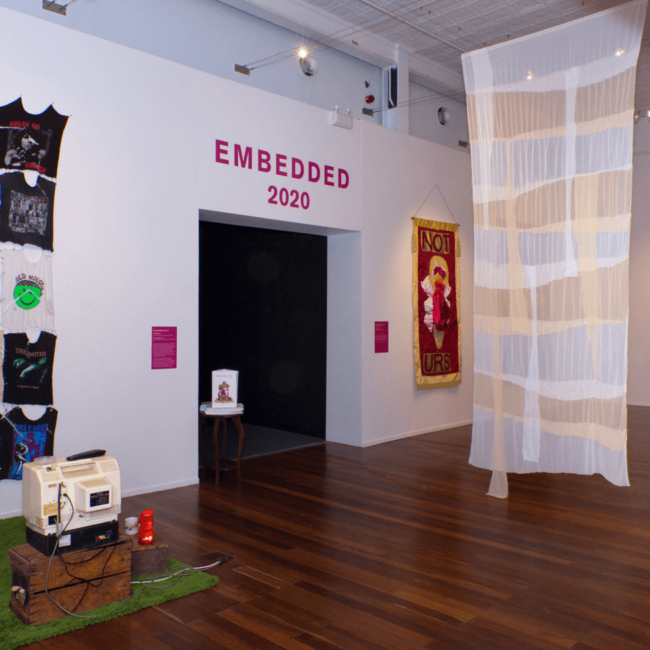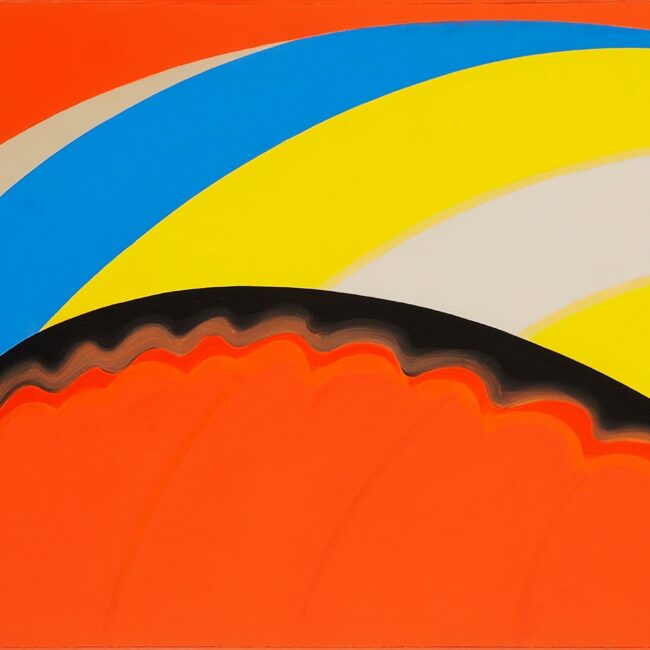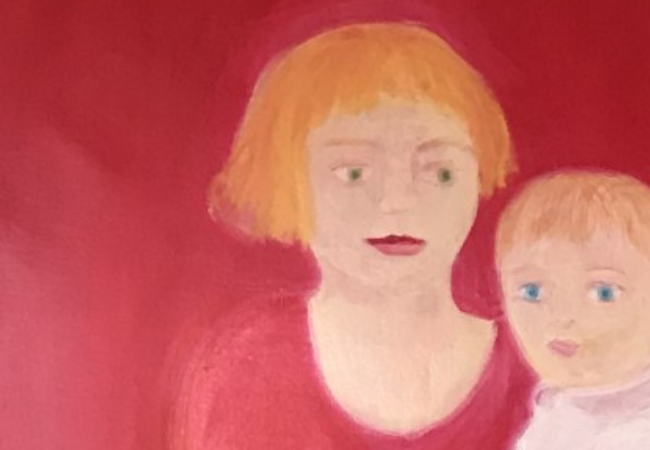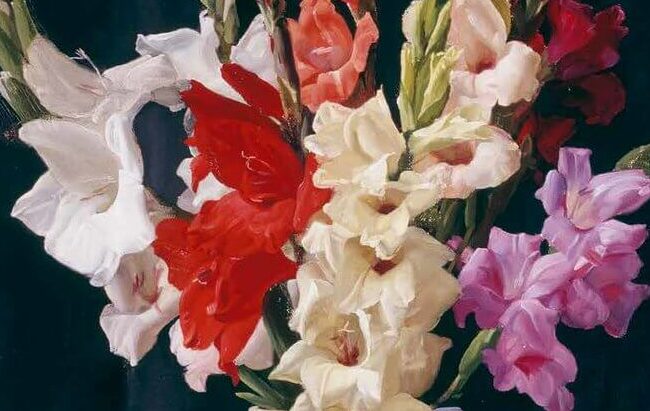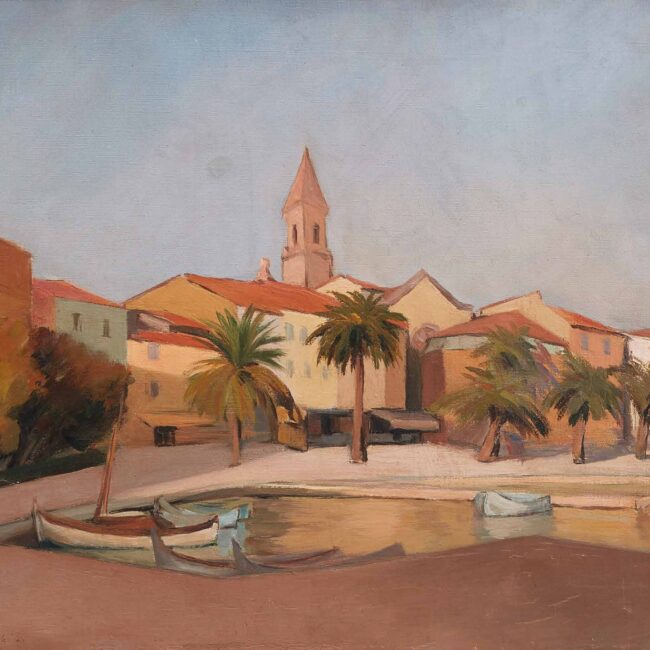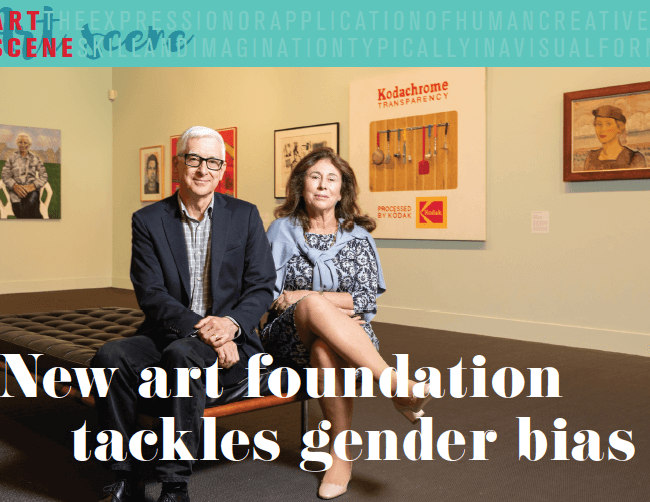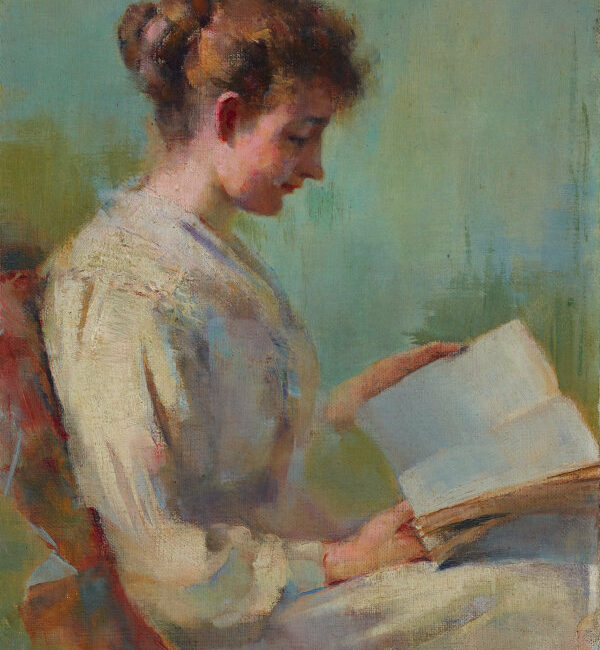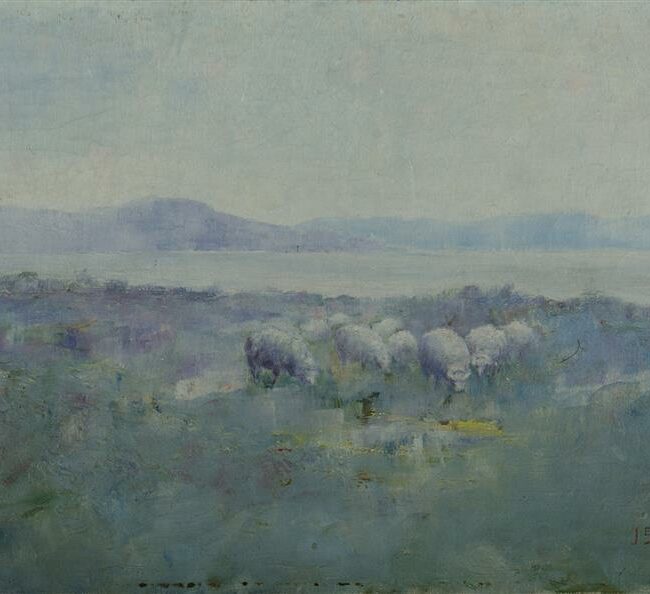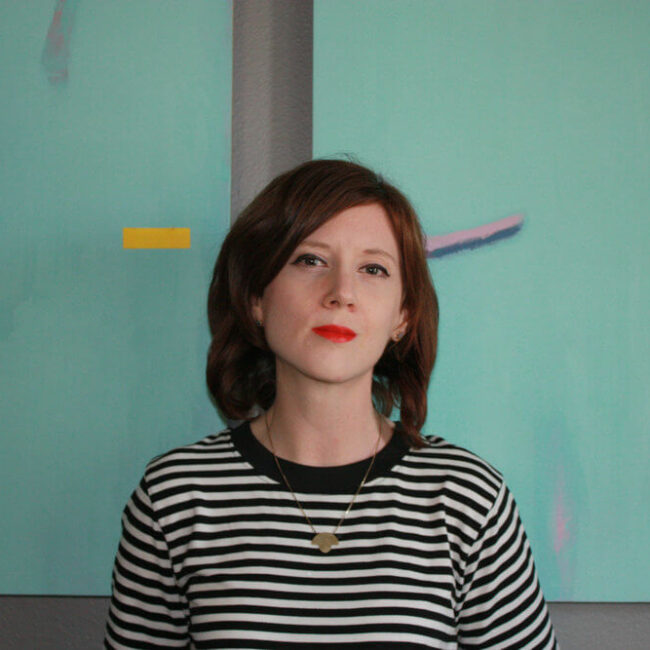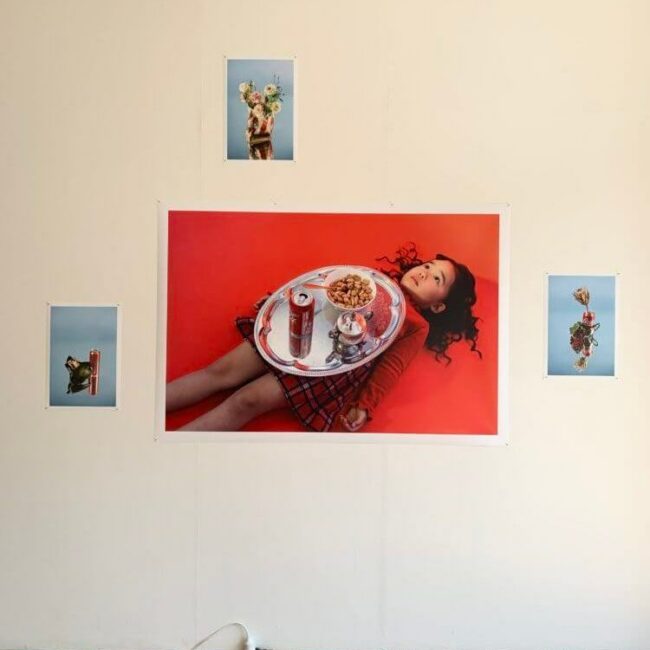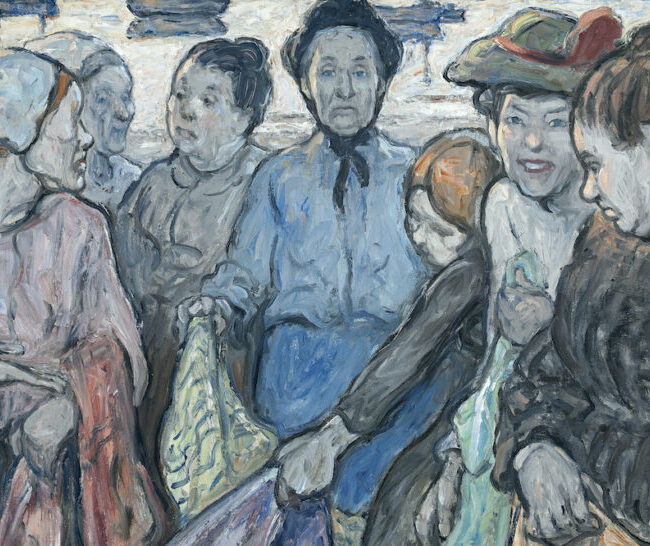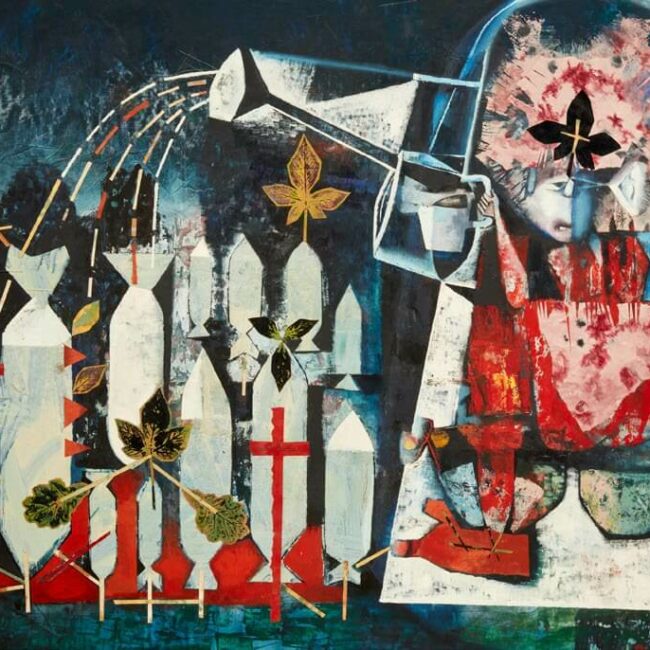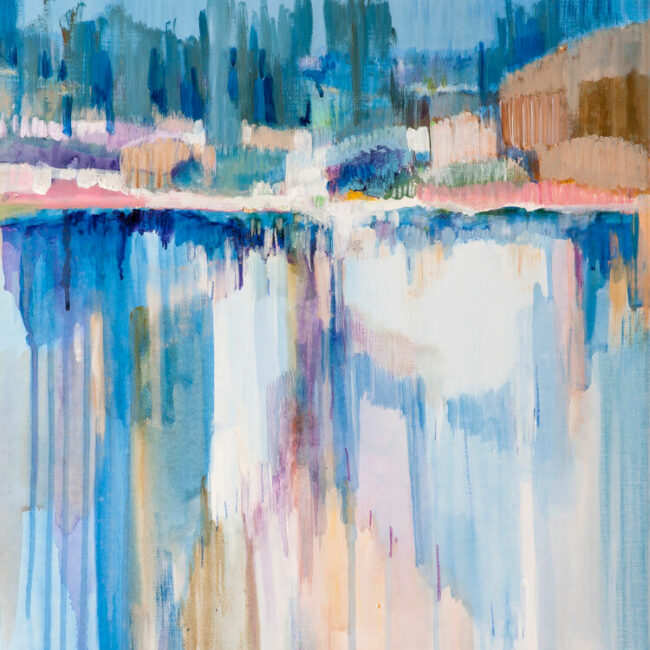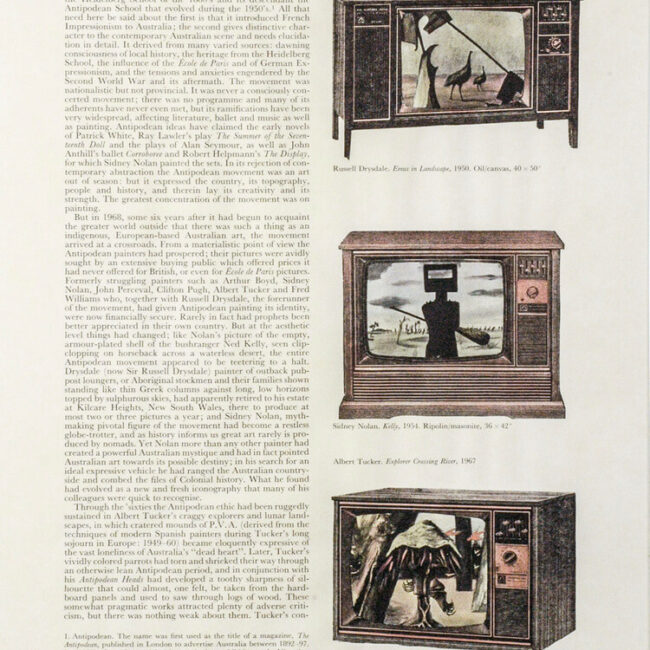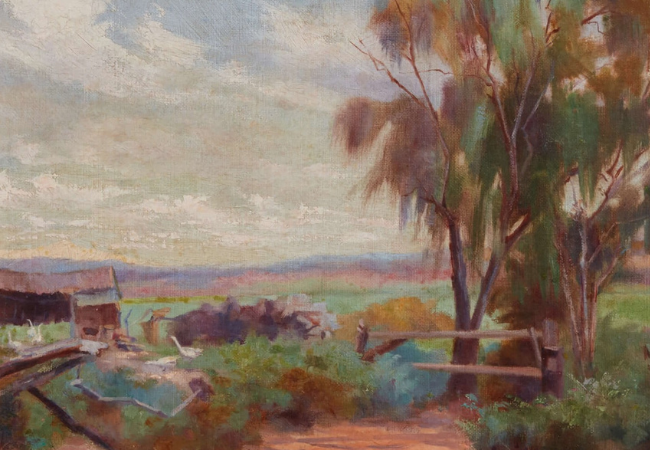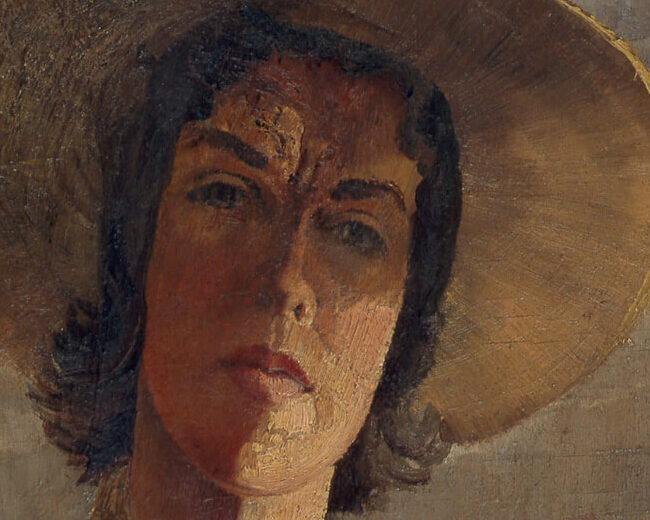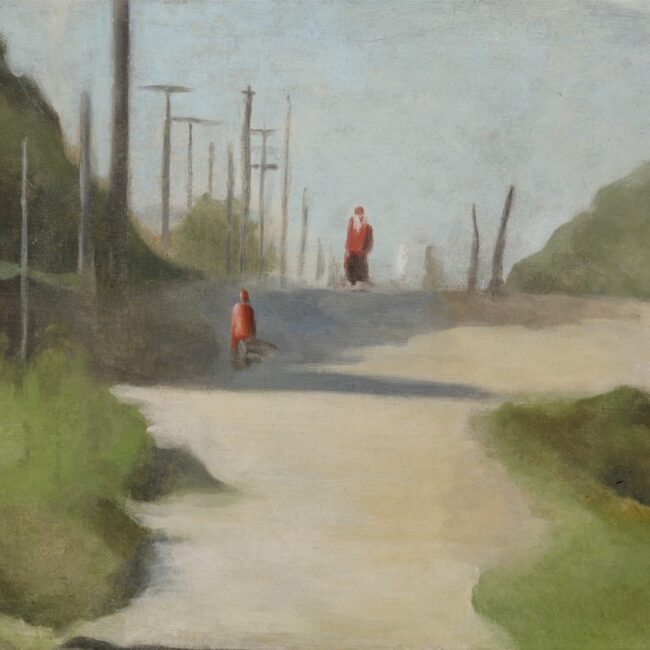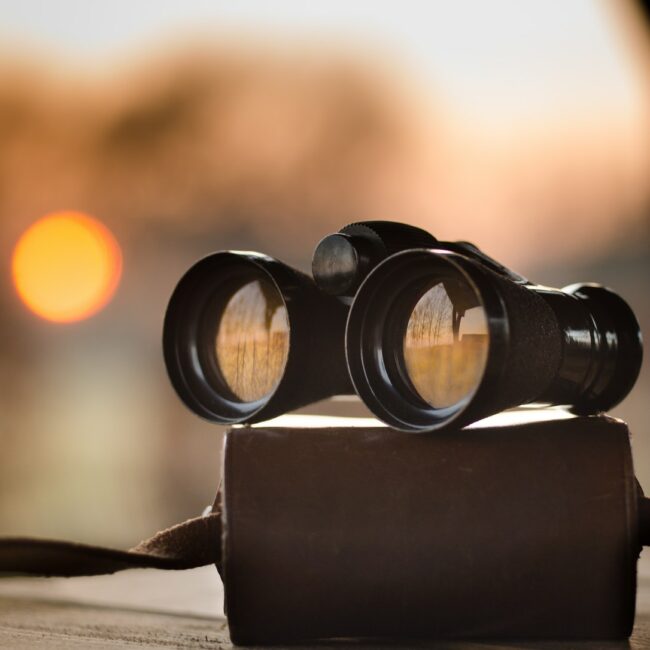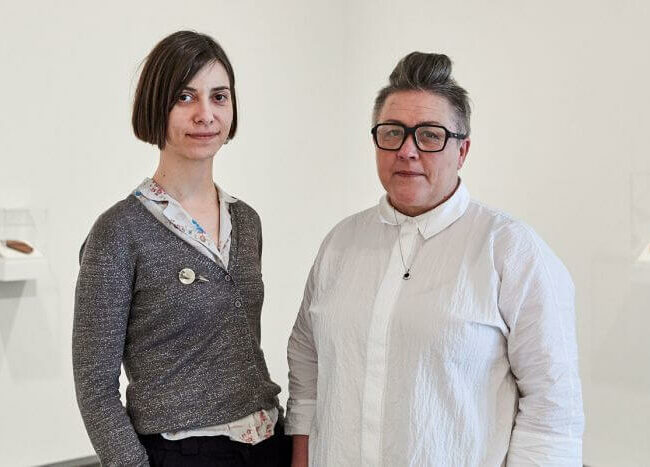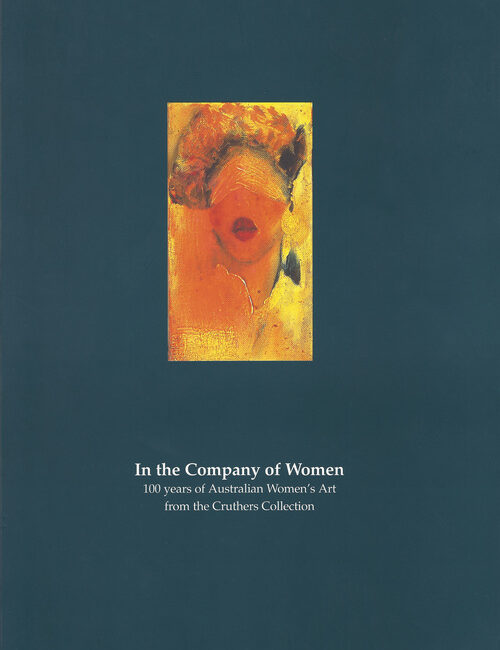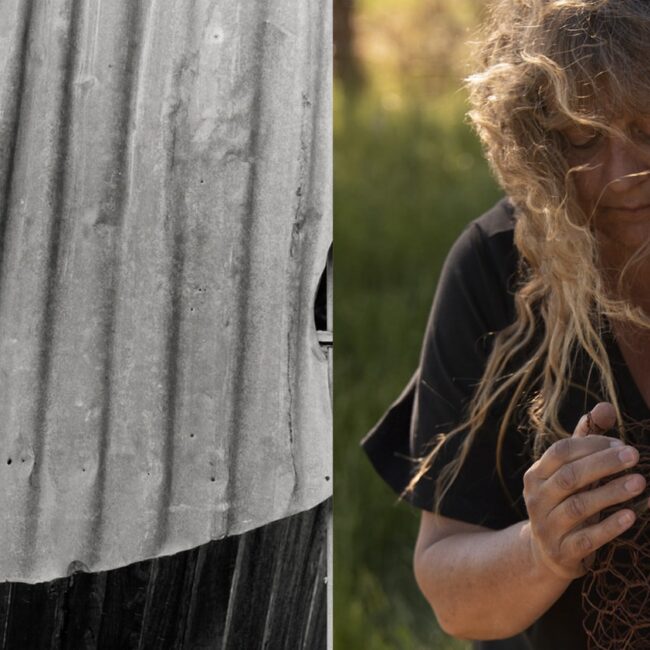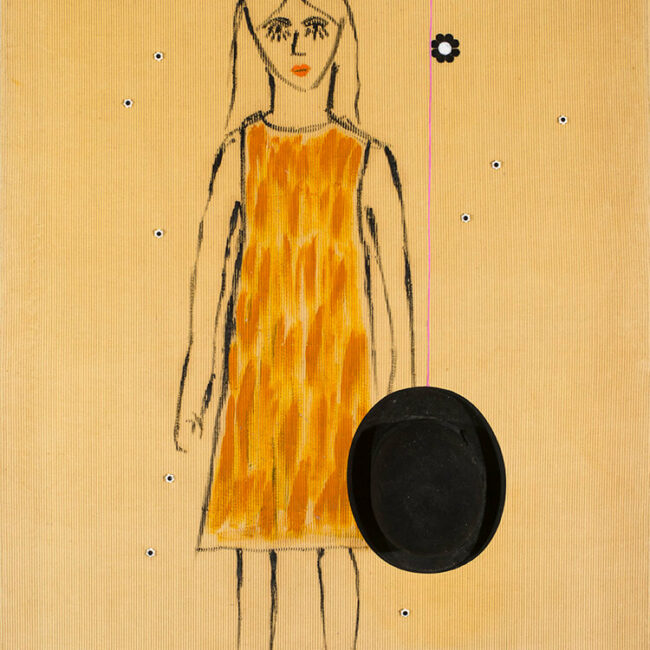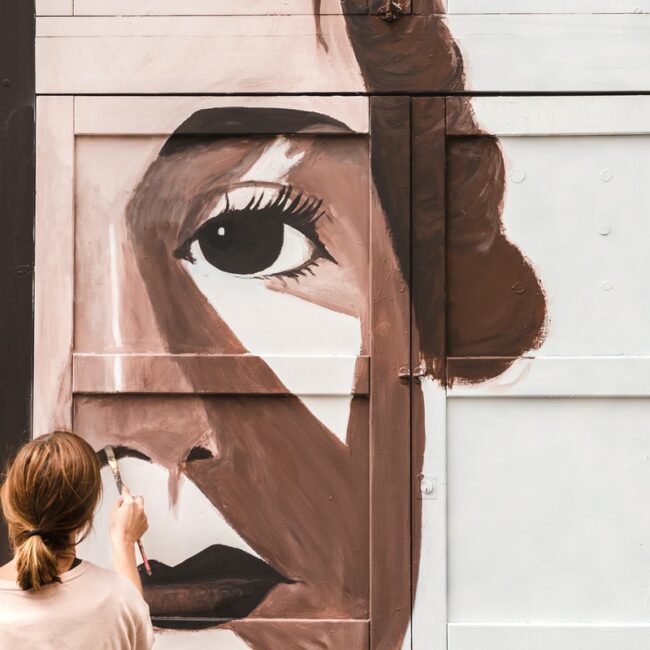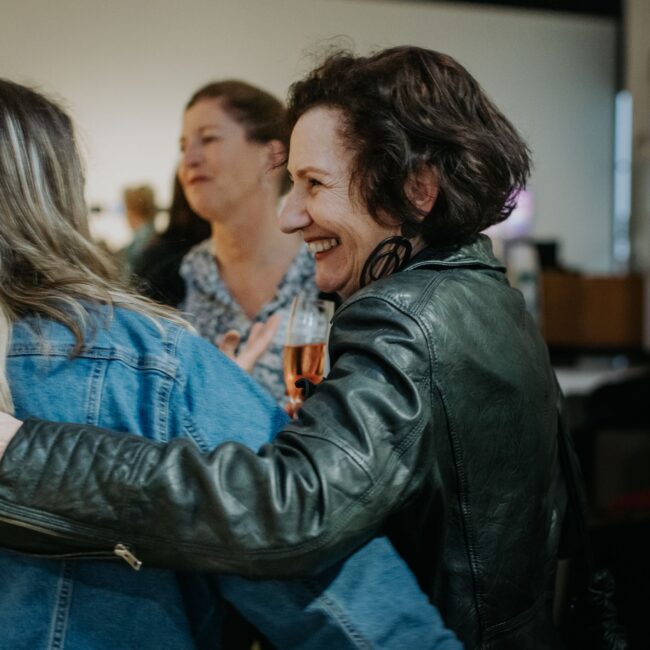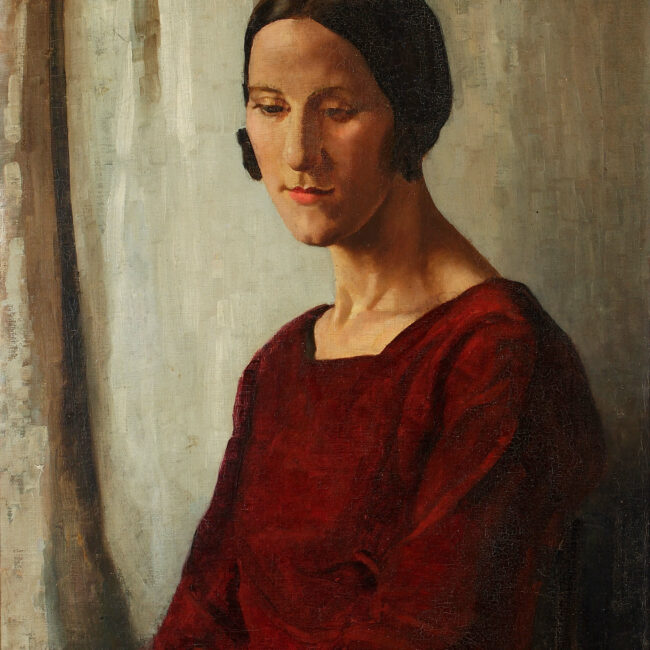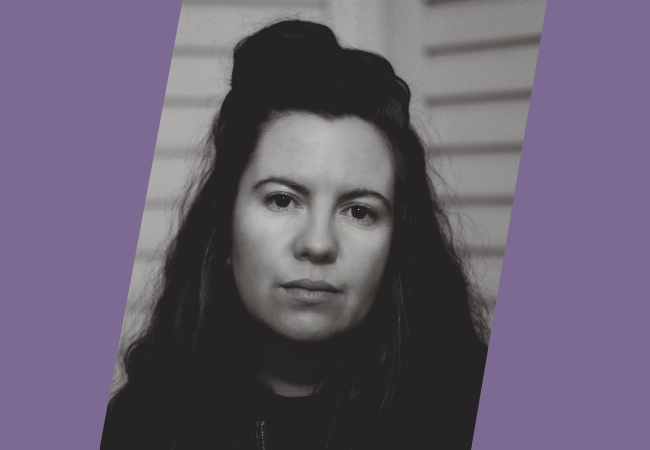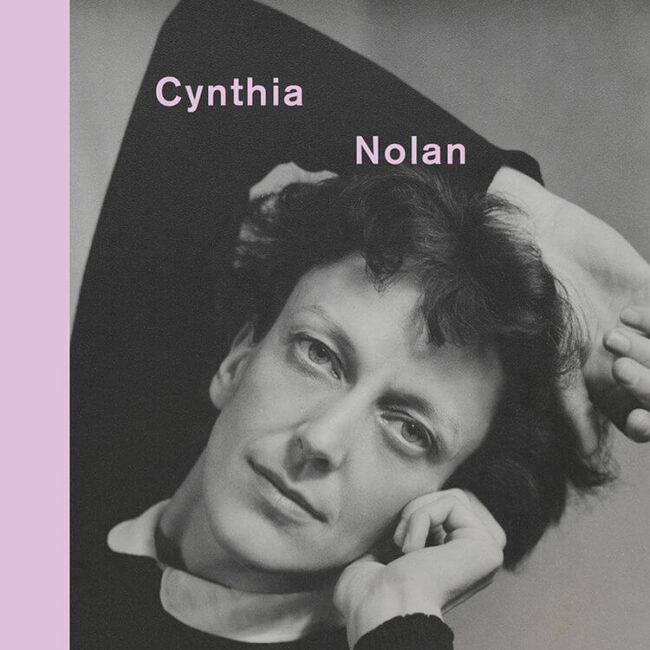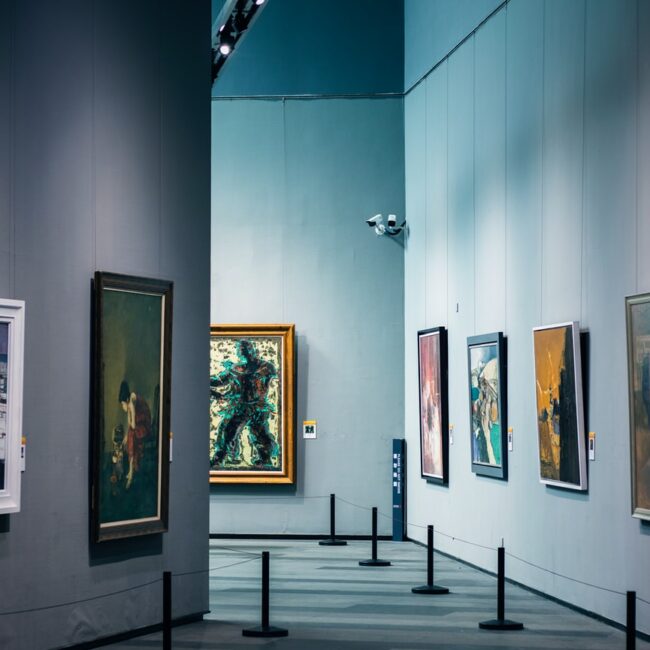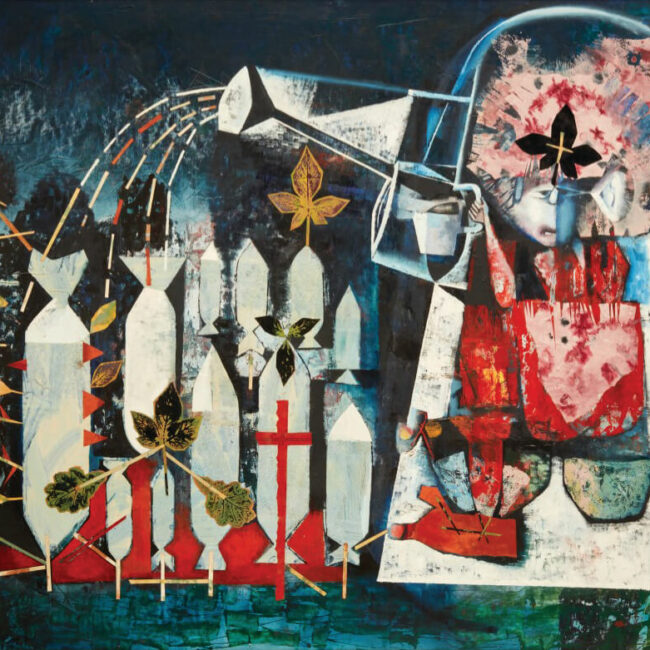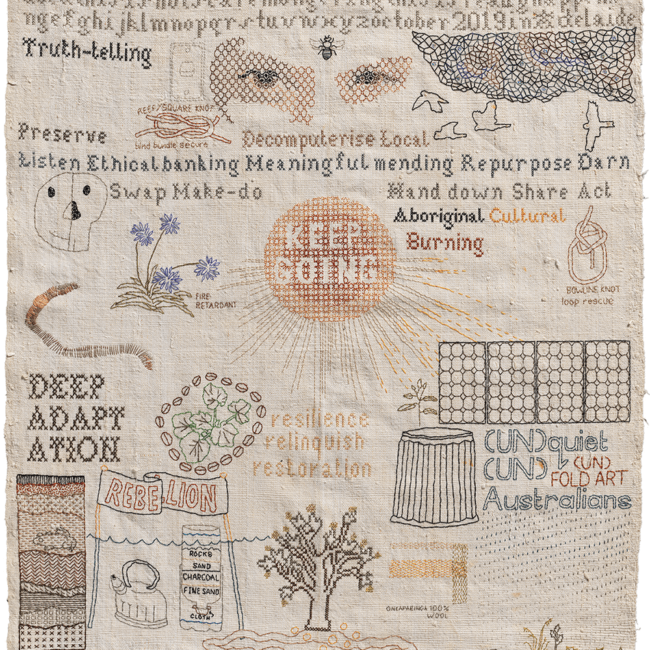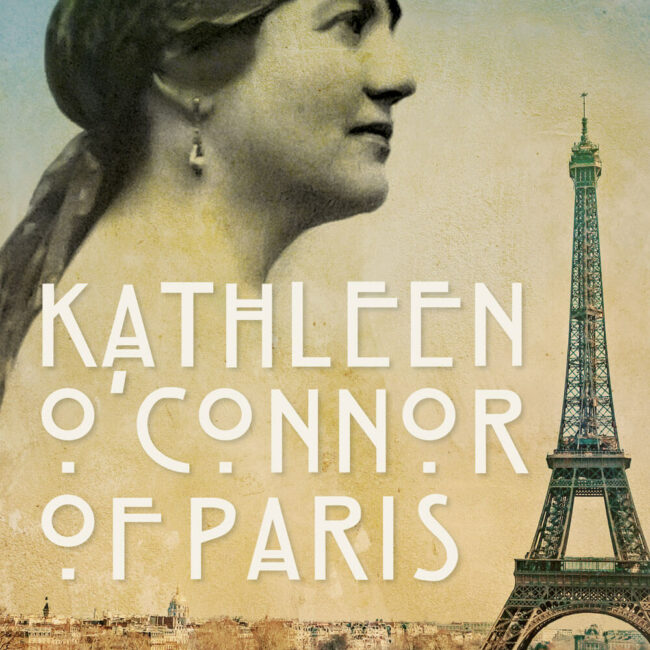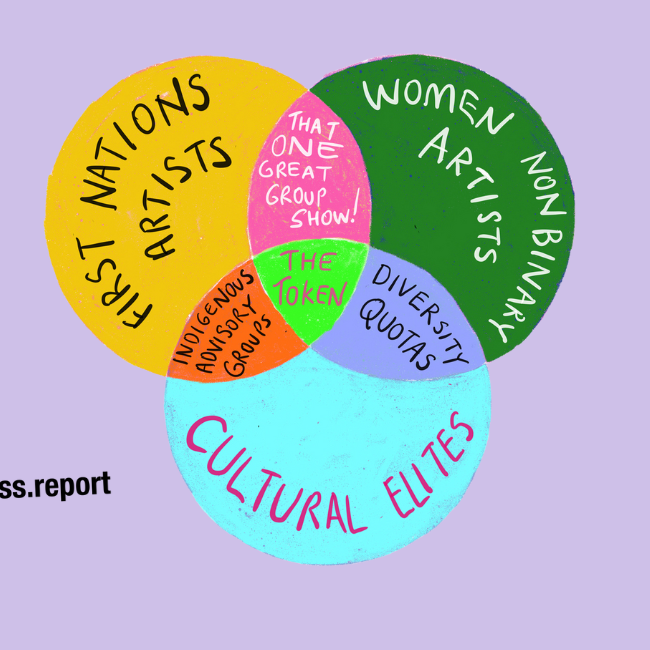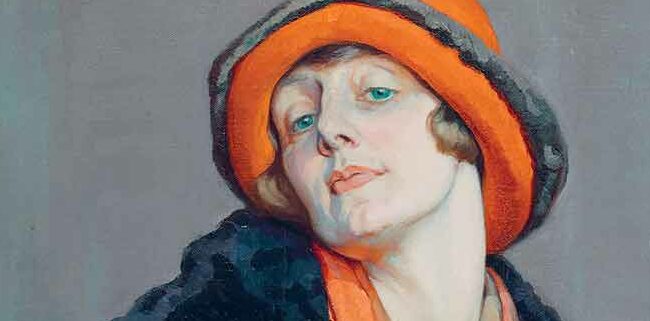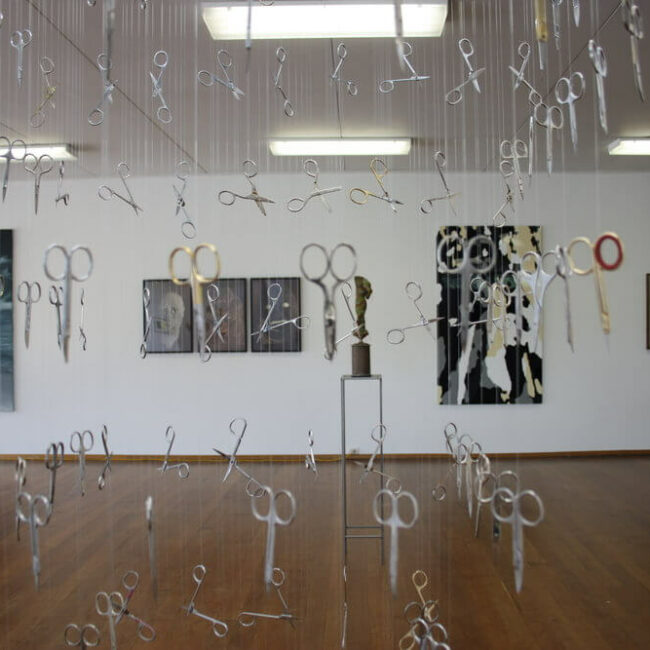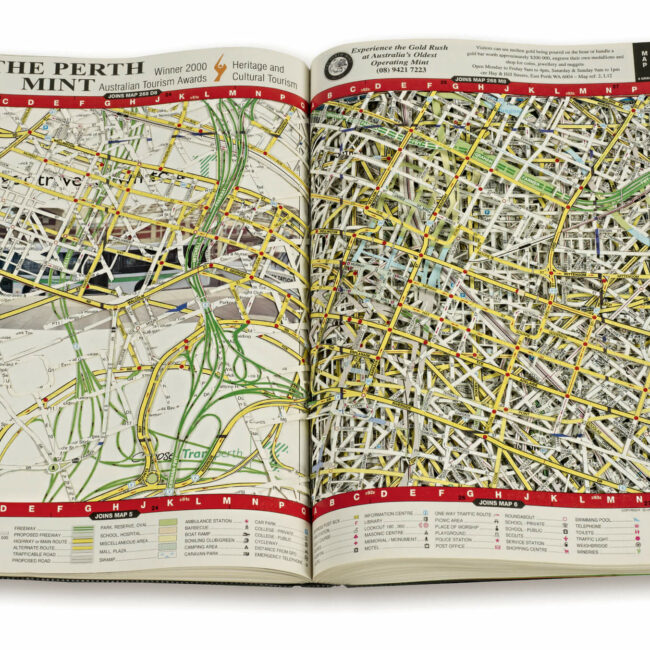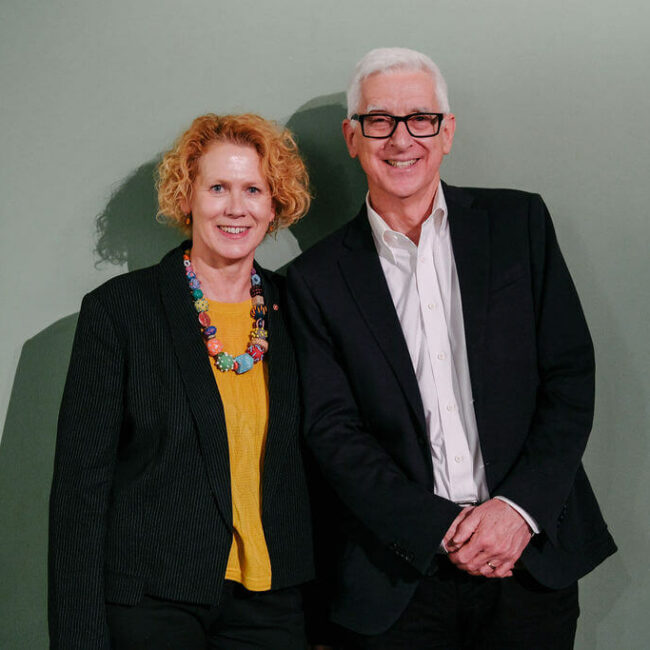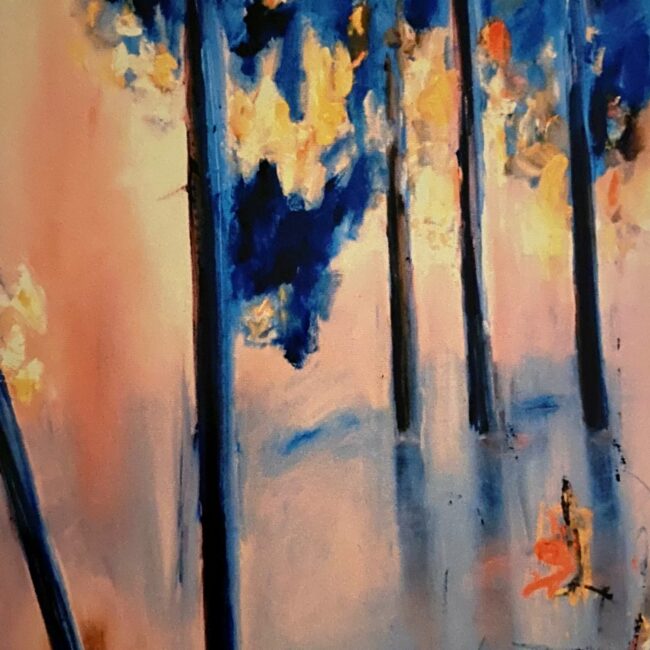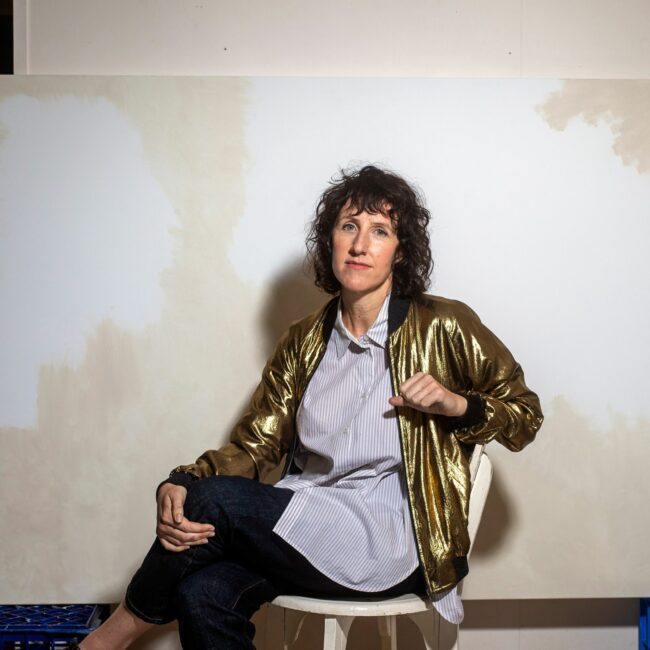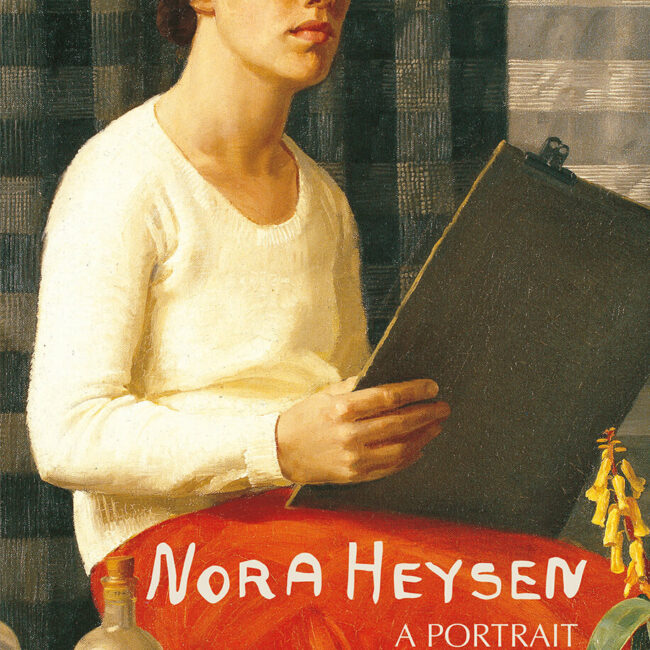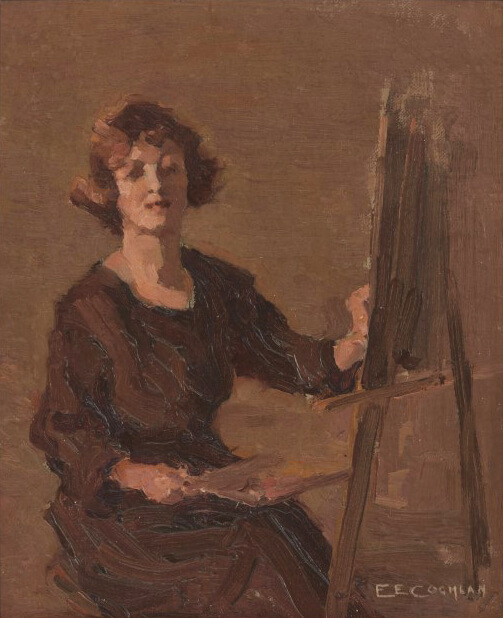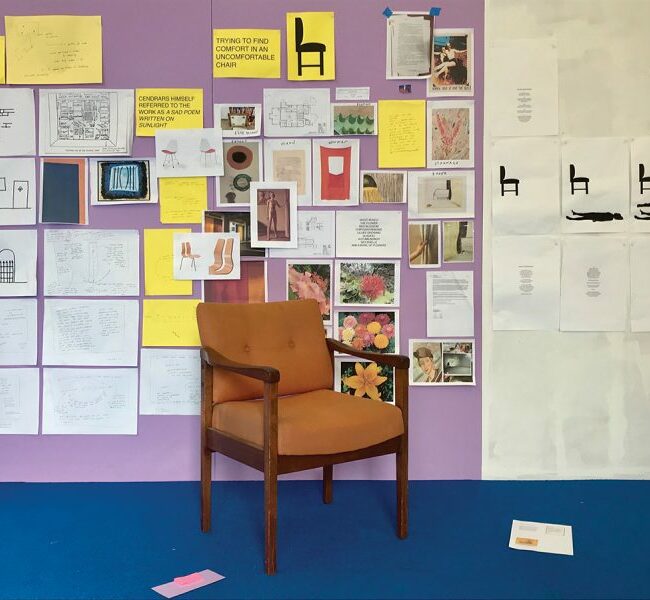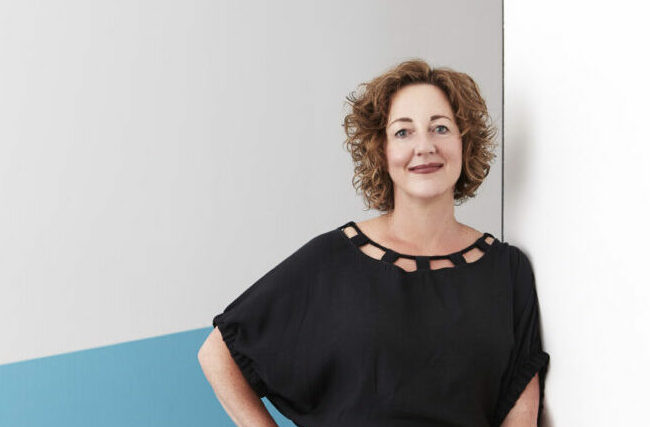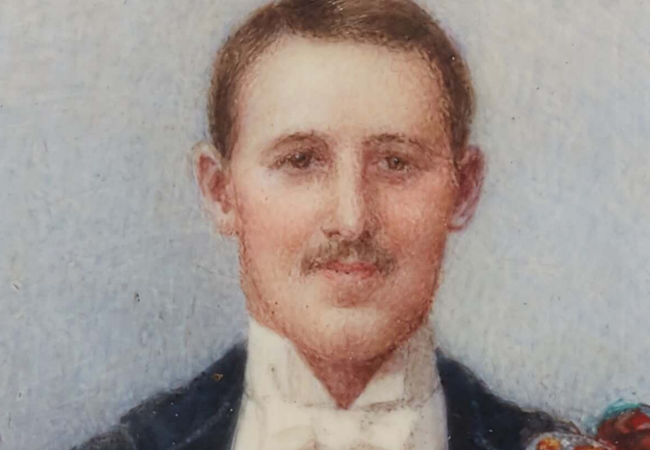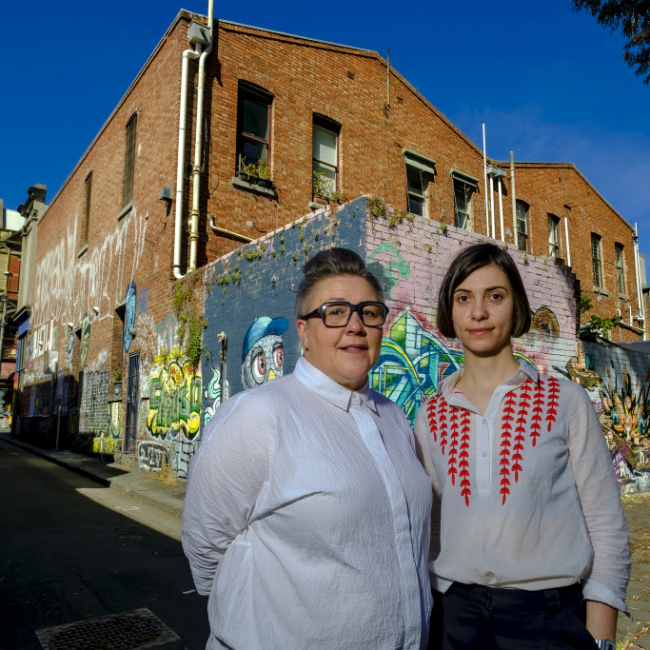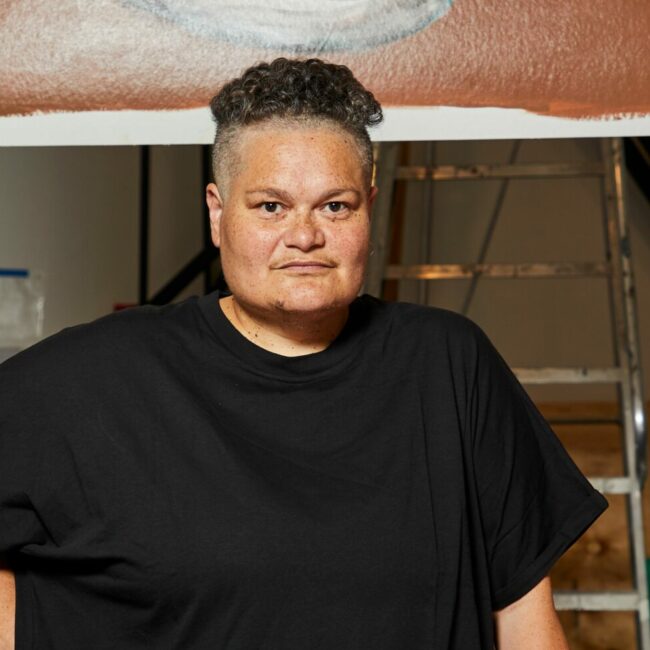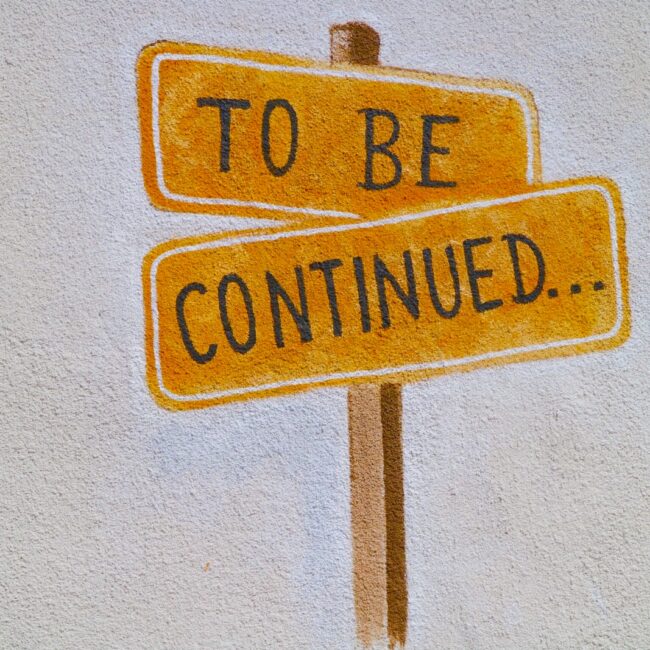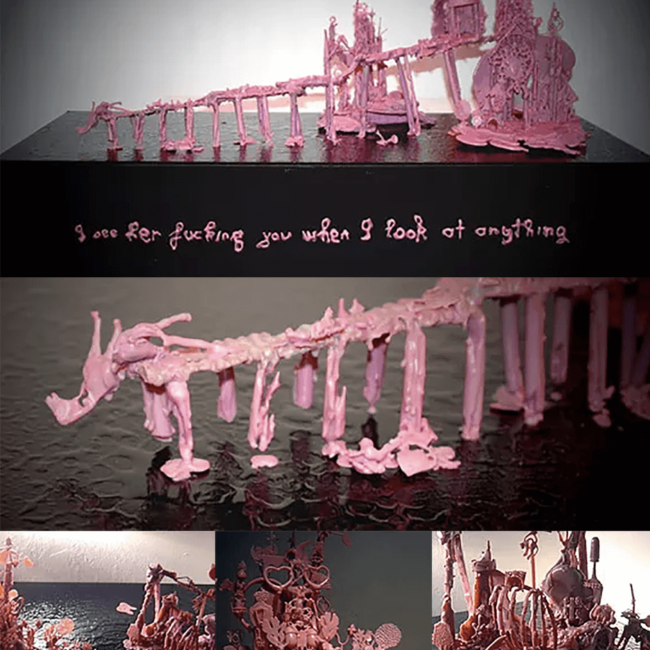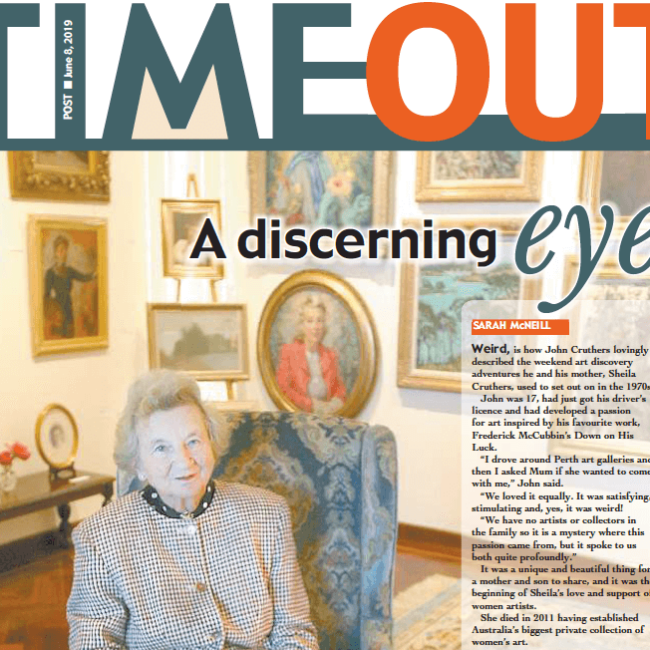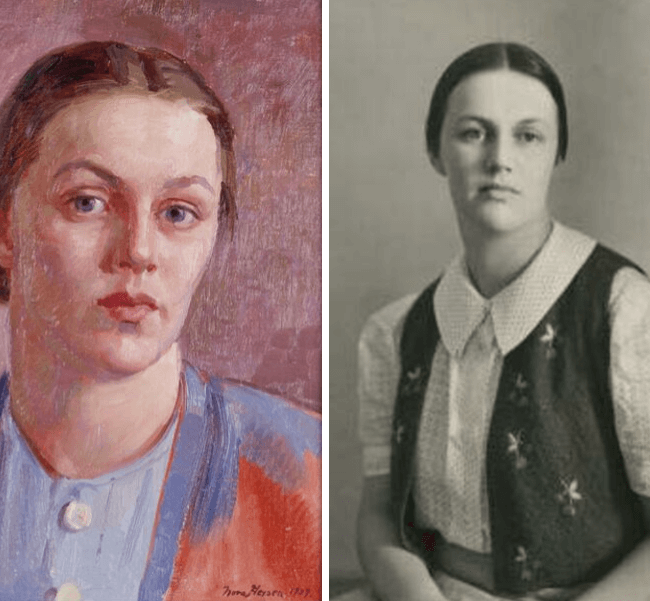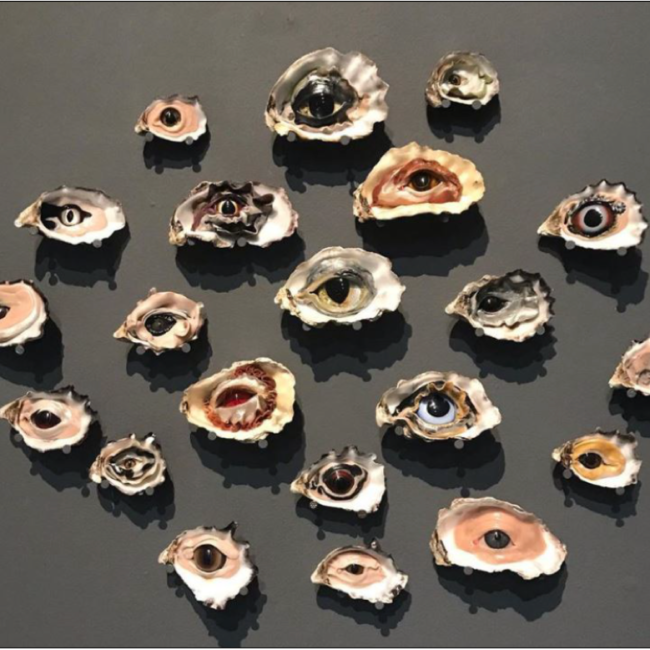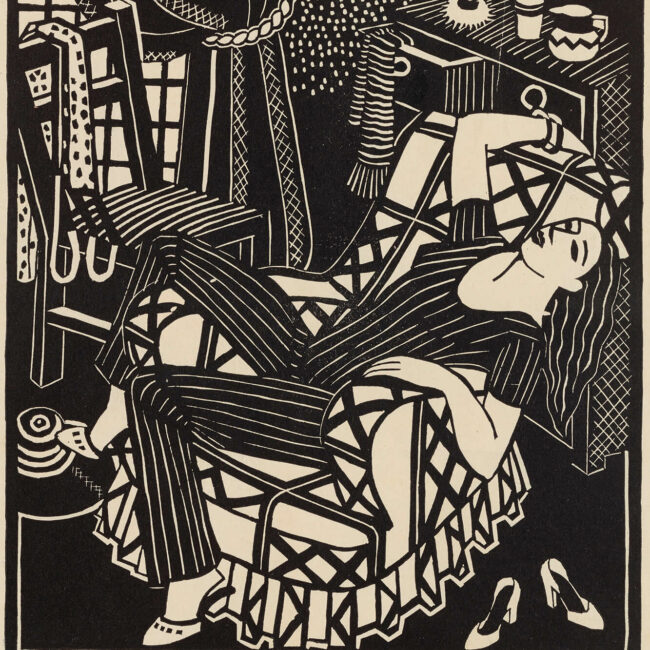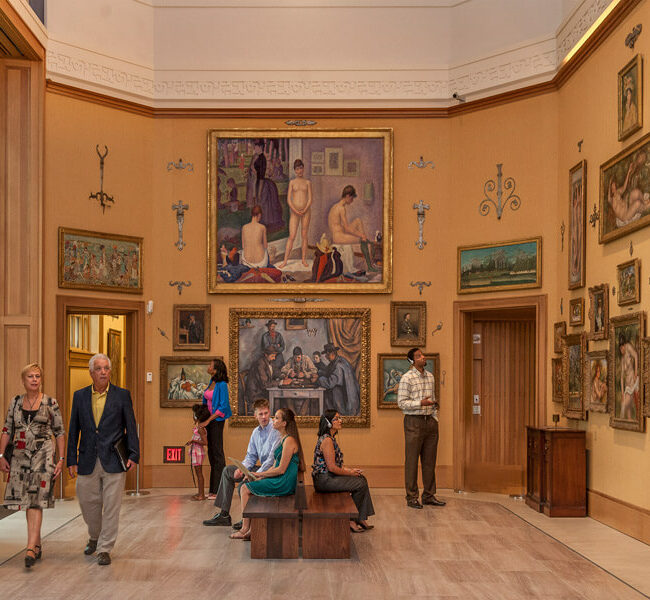Writer Nina Levy from See Saw Magazine has written a thoughtful review on ‘Odd Roads to be walking: 156 Women Who Shaped Australian Art’. Providing a well-rounded critique of the book, Levy praises Odd Roads for “playing a role in the continuing fight for equality, for women artists and for women in general”.
Read the article below or via the link:
https://www.seesawmag.com.au/2021/11/celebrating-women-who-defied-the-odds
“Odd Roads to be Walking: 156 Women Who Shaped Australian Art, Paul Finucane and Catherine Stuart ·Self-published, 2019 and reprinted 2021 ·
Hilda Rix Nicholas’s Une Australienne (1926) stares confidently at us, her chin lifted defiantly beneath the bold and glowing orange of her fashionable cloche hat, a checkered scarf in similar hues framing her jauntily angled shoulders.
It’s a fitting cover image for Paul Finucane and Catherine Stuart’s Odd Roads to be Walking: 156 Women Who Shaped Australian Art. As the title suggests, this beautifully presented book offers an overview of the lives and works of 156 female artists, who lived and died during the 20th century. In choosing to live as artists, these women were each, in their way, defiant; defiant of the norms and tropes that defined the lives of most Australian women.
Like any good coffee table book, it’s the images that make Odd Roads such a pleasing browse. A striking portrait collage of 128 of the featured artists sets the tone, followed by numerous, generous reproductions of works across multiple mediums, glowing with colour, texture and vitality. With the biographies arranged chronologically, these images morph from the soft focus of impressionism, to the rich rebellions of modernism, and the dawnings of postmodernism’s clashes and ironies.
Almost but not quite absent are First Nations artists. Just four are covered: Cordula Ebatarinja, Kurwingie Kerry Giles, Emily Kame Kngwarreye and Queenie McKenzie. In the introduction, Finucane acknowledges that readers may be disappointed that there are so few First Nations artists included, explaining that “Indigenous Australian artists came to prominence later than their non-Indigenous counterparts,” and expressing the hope that a future book covering 21st century artists “will be far better balanced in this regard.”
What is absent in that introduction is an acknowledgement, firstly, that First Nations people have been making art in this place for tens of thousands of years and, secondly, that their lack of “prominence” was a result of colonial blindness to the value of that art. That the 20th century Australian art world was in thrall to Europe comes across strongly in both the introduction and the biographies that follow, but with little interrogation.
Also largely missing from this book are its sources. Though the end notes reference the occasional text, for the most part it is unclear where the source material for the book was found. Were these included Odd Roads would make an excellent first stop reference book for students.
Nonetheless, the biographies of the featured artists provide an often fascinating, if slightly formulaic, insight into the social and historical contexts of each artist; their challenges and achievements. Many of these women were pioneers – not just as artists, but as teachers, leaders and political advocates – and their roles in this regard are highlighted and celebrated.
Frequently one encounters the poignant observation that the artist only achieved notoriety posthumously.
And though the world has changed, it also hasn’t. According to researchers at Macquarie University, a national survey conducted in 2016/17 showed that female artists earned thirty percent less from their creative work than males.
Thirty percent!
In bringing together the stories of 20th century Australian women artists and championing their work, Odd Roads to be Walking is playing a role in the continuing fight for equality, for women artists and for women in general.
And that support goes beyond words. The writers are giving all the profits from sales of Odd Roads to Sheila: A Foundation for Women in Visual Art. The mission of this national philanthropic foundation is “to overturn decades of gender bias by writing Australian women artists back into our art history and ensuring equality for today’s women artists”.
Let’s hope that it doesn’t take another century to achieve.
Odd Roads to be Walking is available from the Odd Roads website, The Lane Bookshop (Claremont) and the Art Gallery of WA shop (currently closed for redevelopment).”
Written by Nina Levy, SeeSaw Magazine

